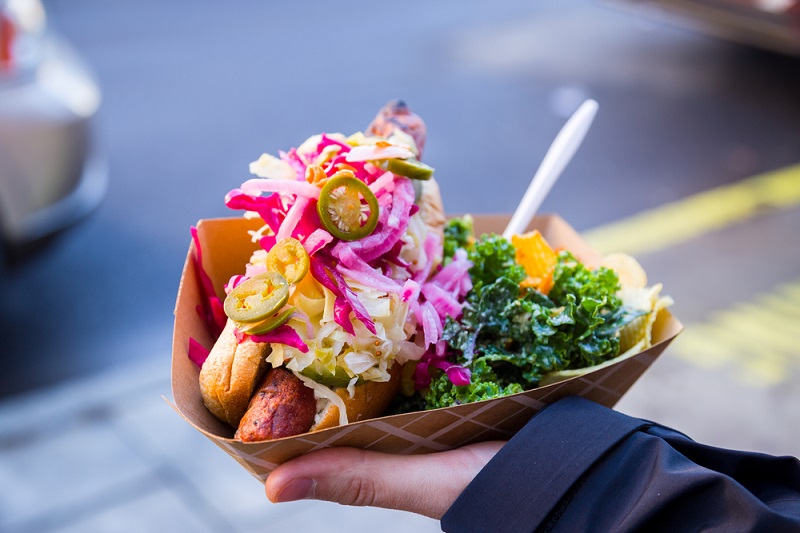A simple handbook to resist the temptation of the “street” food and preserve your good eating habits. It is no coincidence that countries where it is overweight that is more prevalent are also those with a larger number of fast food and poor quality restaurants on every corner.
Just to walk around cities like New York, London or Hamburg to realize the widespread distribution of fat is that opportunities to fill his belly spending very little. Hot dogs, hamburgers, donuts, sausages, chips, cakes, ice cream, cappuccino, rolls, chai latte, pizzas of all kinds have become an integral part of the street furniture and large cities are in the streets, in shopping malls, stations, at airports, in essence anywhere there is a sufficient flow of potential consumers.
The thousands of temptations that we meet walking on the street stimulate our search for pleasure and no appetite.
This perennial invitation to eat or to take caloric beverages makes it difficult to self-regulate their food consumption. In addition, points of sale, you consume not only food and drink but also business meetings, hours of writing or email to make it difficult to distinguish the act of eating from other activities maybe useful.

Recent years have definitely torn down the barriers between work and private life, including leisure and hours in the office, between leisure and work places, including meal times and hours of fasting. We are constantly connected to each of us through a network that is certainly useful but too often we become slaves.
In this context, it became even our eating habits. We have less time to buy and prepare food, we eat less at home and then we entrust much of our power to strangers who, willingly or not, have more care about their economic performance of our health. And the financial results, in most cases, still are obtained with the taste and not with authenticity.
The food industry for decades is very familiar with the techniques to manipulate the taste and thus indirectly consumption. That being pointed in the jargon is called bliss point, which is that precise balance of sweet, salty and fat that causes the maximum sensory pleasure. In the consumer’s palate, this mixture of ingredients results in a peak release dopamine, the neurotransmitter responsible for feelings of pleasure and contentment. The desire for pleasure than for power and depth of the mechanisms regulating appetite and leads us inevitably to excess eating and too often. The thousands of temptations that we meet walking on the street stimulate our search for pleasure and no appetite.
In addition, to get the bliss point at the lowest possible cost, and thus enjoy higher margins, industries using poor quality ingredients.
The junk food is closely connected with what is called street food, street food, eaten in a hurry from one step to another in increasingly crowded cities in the world. Lately also perceived a tendency Healthy growing, industries are trying to reap the benefits of this trend also. Sometimes they do so with good products. More with inadequate food in terms of ingredients, but very well disguised as healthy products.
This view is particularly insidious for the most vulnerable in terms of eating behavior, for children if not well managed by the parents and the kids.

But there are some simple rules that can help reduce the risk of a new food fashion …
1) Organize your day around breakfast, lunch and dinner
It is very important not to skip these meals because this will become an excuse to legitimize eat on the go: “I skipped lunch, but I have a hunger! Now I eat a sandwich,” it is the typical reasoning. Spend enough time to the three main meals and you will have less need to eat on the go.
2) Take away snacks
Or, at least, decide in advance what are the things that will wilt when you’re around. A centrifuged not the same as a sandwich, a cup of coffee has little to do with a chai latte made half of syrup. Read more or ask the ingredients of the food you eat.
3) Try to attend as often as local health-rather than generic
Because you’ll have a few more options to find something that is not harmful. But be aware that these are usually full of food “trap”, advertised as healthy but actually full of unhealthy ingredients.
4) If you can, stay in the open air and prevents local
A snack brought from home and eaten in a park is better than what you find at a bar and eat on a bench will become an occasion to spend a few minutes in contact with nature.
5) If you decide to eat, stopped
Why eat walking more easily leads to excess. Our nervous system is not perceived as a physiological take food while moving and this movement makes it less accurate the satiety signals.



